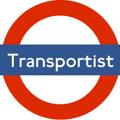Review of Gridlock: Why we're stuck in traffic and what to do about it. by Randal O'Toole. Cato Institute Press, 2010. ISBN 978-1-935308-23-2returnreturnGridlock by Randal O'Toole is one of a slew of recent books and reports about transportation that has been released in anticipation of federal surface transportation reauthorization, the "highway" bill that is passed every five or six years by Congress which sets federal spending limits and establishes policies for both highway and urban public transit in the United States. This book identifies major problems with US transportation policy, pinning problems on planning and planners, and what it considers their misguided emphasis on rail and land use-based solutions to a variety of problems that would be better addressed without what is dubbed "social engineering" and instead focusing on technology and sound principles of economic efficiency. Reading this book in one-sitting, I found I could not dispute most of the facts brought to bear by the author in support of his case. Where this book will be controversial is in its implicit (and sometimes explicit) underlying preference for a particular set of political values. The book, published by Cato, unapologetically adopts a rationalist libertarian perspective prizing efficiency in government services, minimization of those services, and maximum freedom for travelers, and aims to apply that perspective without modal prejudice. returnreturnWe must begin with a caveat about the title. "Gridlock" in traffic terms is largely hyperbolic, it is seldom the case that cars are unable to move because intersections (on grid networks) are blocked and thereby locked. But the term is used as much to describe traffic as it is to describe the policy process which is stuck, and getting more stuck over time, in what the author views as strategic policy errors. It is really the governance structure for transportation which is in Gridlock. Adopting this title, "Gridlock," suggests that the primary transportation problem is traffic congestion. The subtitle alludes to an earlier book by Anthony Downs "Stuck in Traffic" on the same topic. returnreturnThe first substantive chapter "Land of Mobility" provides an excellent, though brief overview of transportation history in the United States, showing how the national wealth rises with travel speeds, taking snapshots at 50 year intervals. returnreturnIt is the second chapter "Potholes in the Road" where the controversy begins. This author opposes what he views as anti-mobility forces that aim to slow traffic. He takes aims at the infrastructure panic (p. 27), traffic calming (p.32), and accessibility (p.33), among others in a few broadsides that miss their mark in my opinion. "Accessibility" is simply the ability to reach (access) destinations, it is a modally neutral concept that the author conflates with transit and walk accessibility. His use of the term "mobility" (the ability to move on networks) for auto accessibility is needlessly confusing. Why congestion, while annoying and wasteful, should be the central transportation issue, rather than accessibility, which the author elsewhere essentially says increases the productivity of cities, is never made clear. Why the author believes that concern about infrastructure is a "panic", when bridges are in fact crumbling and collapsing, is also not clear. The I-35W Mississippi River Bridge, the most recent, and most noteworthy, of recent infrastructure failures collapsed because of a chain of events, including and beginning with a design mistake, but including every decision not taken which could have discovered and remedied that mistake. It seems as though the author believes if the investment does not add capacity it is waste, not allowing sufficient funds for operations and maintenance.returnreturnThe author then contrasts the "Smart Growth" agenda, promulgated by planners since the mid-1990s with the "efficiency" agenda the author advocates. Smart growth aims to increase densities (build up not out) and support those higher densities with transit. The author notes that these policies are likely to be largely ineffective in changing behavior, and are also likely to be expensive. I am sympathetic with the critique of the overly-prescriptive nature of so-called Smart Growth, I would suggest that instead Smart Prices be implemented, and use those prices (e.g. appropriately set impact fees) which incorporate the full social cost of development (roads, water, sewer, schools, parks, etc. required to accommodate development), to direct development with the invisible hand, allowing developers to decide where it is worth paying the price, and where it is not. returnreturnThe author next takes on fixed rail investments at the urban and inter-urban levels. The author dislikes high speed rail, which he labels "The Next Boondoggle", seemingly the next major infrastructure investment the US will engage in. The problems are many, and follow those of transit, strategic misrepresentation and optimism bias on the part of project promoters, and general ineffectiveness in building a capital intensive mode that is neither faster than its competitors, nor more agile. The author is in my view spot-on in identifying the problems here. These problems arise from the structure of transportation financing in the US, where capital investments are subsidized by the federal government, and so local incentives are quite different from national ones. The incentives of members of Congress do not align with the national interest. returnreturnTwisting conventional wisdom on its head, the author argues that not only are transit and high speed rail more expensive, they are also more environmentally damaging than the auto-highway system. The author argues that technological solutions to pollution, reinforced by government policies like the Corporate Average Fuel Economy (CAFE) standard, have been very effective, while behavioral solutions have all failed. It is in some ways surprising for the author to be supportive of CAFE, given his opposition to so many others.returnreturnThe author proceeds to describe the funding situation for transportation today, and discusses the question of subsidy and cross-subsidy and the user-fee concept behind the transportation trust fund. About one-fourth of highway user fees are spent on transit projects (despite a transit mode share considerably lower than one-fortieth of all trips or all miles traveled). The cross-subsidies in urban transportation are essentially unidirectional. This helps explain the shortfall the trust fund has seen in recent years, along with the decline in vehicle miles traveled associated with higher gas prices and recession. The fact that there are cross-subsidies should not argue for no additional funding for transit, there may be an economic case for subsidies, but the policy debates devolves from rational argument to name calling (he gets more money than me) pretty quickly. returnreturnSome remedies are proposed. One of the problems is that present-day planning is subjective and misguided. The author argues for what is effectively short-run planning using a rational planning/decision-making process. I tend to agree there is no reason trying to identify problems thirty years from now when there are plenty of problems today laying about unsolved. I believe there is a tendency among planners to bring distant dangers near. The potential would be for a community to establish a vision of where it wants to be, and then to check each decision it makes against that vision (does it move the community closer or farther). That vision would be periodically revisited. That is not however what Mr. O'Toole proposes. He would eliminate the federal requirement for long-term planning (which is fine, I agree that should be a local community decision), but does not even suggest it would be wise to think about long-term impacts of decisions. Many problems in community development are coordination games ... I will build a transportation facility if you build the development, I will build houses if you build offices, etc. There is a role for establishing a vision of the future that people subscribe to so that actions can be more easily coordinated. Visions like this can become self-fulfilling prophesies, hopefully to the betterment of the community.returnreturnAnother remedy is Intelligent Transportation Systems (ITS), and their promise to increase capacity and safety. The author notes the chicken-and-egg problem of deploying smart cars and smart highways simultaneously, but, inconsistently with his critique of the problem of government management of infrastructure, seems to feel that providing smart highways is an option. At this point in development of ITS, it should be clear that progress will have to be with autonomous vehicles that operate in mixed traffic, the other options are non-starters. It should be noted that my own work with students is cited. While the author is supportive of the technology-fix more than behavioral-fix for addressing transportation problems like pollution and congestion (as am I), only one of many technology-development paths can actually be pursued, and efforts barking up the wrong tree will delay the deployment of the ultimate solution. This is a case where one would think the author would see the difficulties of central planning.returnreturnThe author lays out policy prescriptions, some of which are mainstream among the academic transportation community (allowing road tolls and avoiding earmarks), but others, like eliminating federal planning mandates and clean air requirements, are likely to spark dissent. returnreturnOverall, I think the author over-states the power of planners, and should consider what are the forces the underlie the ability of planners. He suggests citizens are misled by referenda, and the problem is simply the few beneficiaries of expensive investments out-spend the diffuse losers and persuade voters to support them. Certainly that is part of the story, but is there more? Do people perhaps have different values about freedom than the author himself? Is there a possibility that network effects and positive externalities do exist, so that collective action in support of higher densities and transit might create economics spillovers (agglomeration benefits) for everyone? The author admits these exist in New York City. Why cannot similar benefits be attained elsewhere?returnreturnThis is an important contribution to the policy debate, and O'Toole, who writes a blog called "The Anti-planner", brings a fresh and seldom heard perspective grounded in empirical evidence and relentless application of objective analysis drawing from the tradition of Hayek. While many planners may not subscribe to his values, it is crucial they understand the facts laid out, if only to sharpen their own arguments, and disentangle propaganda from reality. returnreturnreturnreturn-- David LevinsonreturnAppears in Issues in Science and Technology

















